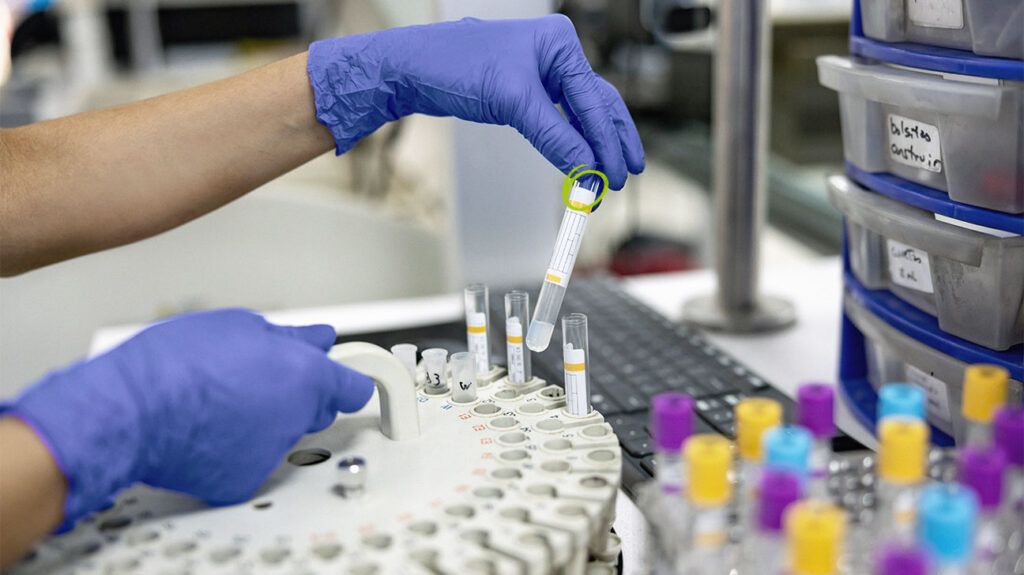
- There is currently no cure for HIV, but medications can help people with the disease manage their symptoms.
- HIV can still develop into AIDS years after infection, however, even with disease management.
- Canadian researchers have developed a novel way to use RNA to help fight HIV using gene therapy.
As of 2022, about
HIV is a virus that attacks the body’s immune system and its white blood cells. This makes a person vulnerable to other infections and diseases.
There is currently no cure for HIV. Doctors can use antiretroviral therapy (ART) to help manage the disease. However, it is still not a cure, and HIV can still develop into AIDS (acquired immunodeficiency syndrome) after 10 years or more.
Now, researchers from the University of Waterloo in Canada have developed a way to use
The study was recently published in the Journal of Controlled Release.
For this study, the researchers created a new nanomedicine filled with genetic materials called
“siRNA was selected as a potential therapy because they can be designed to regulate the expression of specific genes in the body,” lead study author Dr. Emmanuel Ho, associate professor in the School of Pharmacy at the University of Waterloo, explained to Medical News Today. “Benefits of this include lower chance of side effects in comparison to conventional small molecule drugs.”
As the siRNAs can dictate which genes or proteins are turned on or off in cells, researchers reported they caused a 73% reduction in HIV replication.
Additionally, the new nanomedicine helped combat issues HIV presents when it comes to
“Autophagy is a natural process by which our cells can “self-digest” proteins for recycling or even eliminate microbes,” Dr. Ho detailed. “Unfortunately, HIV is smart and they are able to inhibit autophagy by producing a protein called
The researchers also targeted a host gene called
“By developing a combination nanomedicine that can deliver siRNA specific for Nef and CCR5, we hope to one, reduce the expression of CCR5 on cells to reduce HIV binding and infection two, if unfortunately, HIV is still able to infect cells, then by reducing the expression of Nef, we can re-activate autophagy in these cells so that they can digest HIV. This is the first study demonstrating this two-pronged approach for preventing HIV infection.”
— Dr. Emmanuel Ho, lead study author
MNT also spoke with Dr. Edward Liu, chief of infectious diseases at Hackensack Meridian Jersey Shore University Medical Center in New Jersey, about this study. He said the new research is a novel approach to fighting HIV.
“Current HIV medications interfere with the virus’ life cycle at different stages, so a combination of medications is necessary to suppress all HIV growth,” he explained.
“If the HIV virus is limited to the infected cell and the cell destroys itself, then the virus can’t multiply all over the body and destroy important immune cells, called
Dr. Liu said while doctors have access to some antiviral medications that block the uptake of the HIV virus, they have not been very potent and cannot stop HIV by themselves.
“The most potent HIV medications currently are those that stop the virus life cycle, but they still have some long-term side-effects, although much less than first-generation HIV medications. If this nanomedication is used to prevent HIV infection, it should be helpful in reducing the number of HIV infections across the world. Prevention of HIV is much cheaper than trying to treat already infected patients.”
— Dr. Edward Liu, infectious disease specialist
Dr. Ho said that in the absence of an effective HIV vaccine, new therapies for HIV are still needed.
“Current HIV treatment helps reduce the amount of HIV in the body, but there is currently no cure,” he said. “Furthermore, some patients may develop drug-resistant strains of HIV, rendering current treatments ineffective.”
Previous studies report that
In addition to developing AIDS, people with HIV are at a higher risk for several medical conditions, including:
The scientists developed the new nanomedicine so it could be applied vaginally.
“HIV disproportionately affects more females than males,” Dr. Ho said. “This can be due to differences in biological factors, e.g. the female genital tract has a larger surface area compared to the male genital tract, increasing the risk of HIV infection.”
“Furthermore, in certain regions around the world, due to socio-cultural factors, some females are not able to negotiate condom usage with their sexual partners, hence, increasing the risk of HIV infection,” he continued.
“By developing a vaginal product, this will provide females with an additional option to protect themselves.”
Dr. Ho said that his research group is also currently exploring new technologies that can protect both females and males from HIV infection.
“Next steps will include further optimizing the technology to increase its efficacy in protecting against HIV infection,” Dr. HOo added. “This may include altering the amount of siRNA delivered or altering the nanocarrier composition to improve its uptake into target cells.”
Dr. Liu agreed a vaginal medication could allow females to have more control over their health.
“As a practicing physician, I would like to see what the side-effects of these nanomedications are and how effective they are in the general population in HIV infection prevention,” Dr. Liu said.